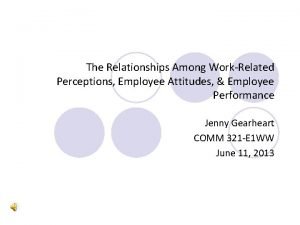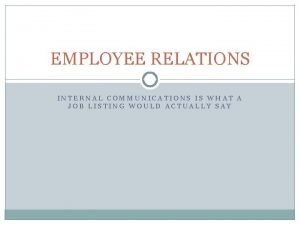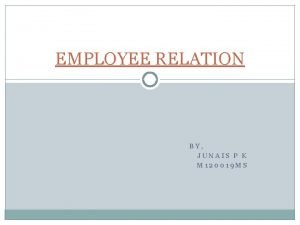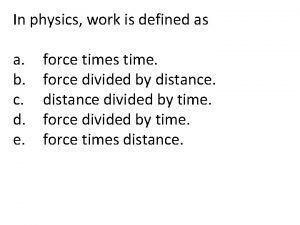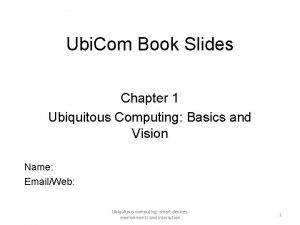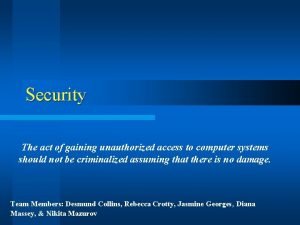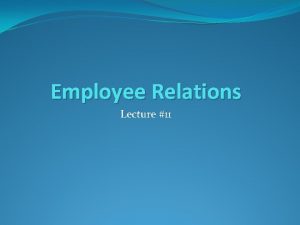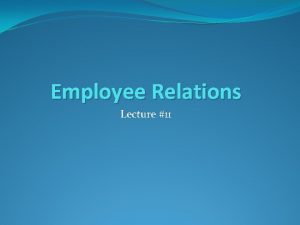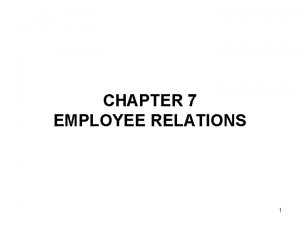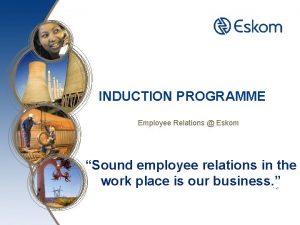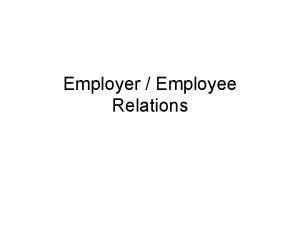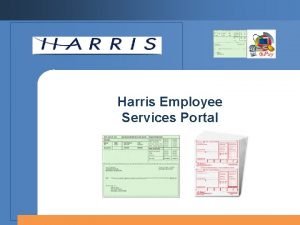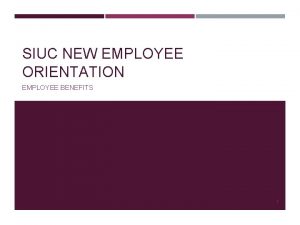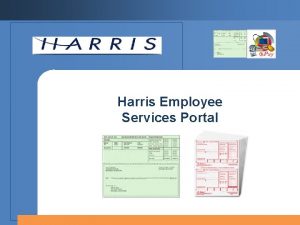Lecture 9 Employee RelationsIndustrial Relations EMPLOYEE RELATIONS DEFINED













- Slides: 13

Lecture 9: Employee Relations/Industrial Relations

EMPLOYEE RELATIONS DEFINED Employee relations consist of all those areas of human resource management that involve relationships with employees – directly or through collective agreements when trade unions are recognized. This resource is part of a range offered free to academics and/or students using Armstrong’s Essential Human Resource Management Practice as part of their course. For more academic resources and other FREE material, please visit www. koganpage. com/resources and then click on Academic Resources.

EMPLOYEE RELATIONS STRATEGY Employee relations Industrial relations Employee voice Communications Recognition Consultation Formal Procedures Participation Informal This resource is part of a range offered free to academics and/or students using Armstrong’s Essential Human Resource Management Practice as part of their course. For more academic resources and other FREE material, please visit www. koganpage. com/resources and then click on Academic Resources.

What is a trade union? F A body that represents the interests of its members, predominantly in the context of employment F Their form, practices and ideologies differ between countries F They thrive in situations where: F Employees enjoy limited, or no, protection from state or other authorities F Management show little concern for employees’ interests - Individual workers are relatively powerless to challenge management F Workers have a strong sense of grievance towards management – feel that they are being exploited and treated unfairly.

Why do some employers not recognise the unions? • Management is reluctant to share decision making • Objectives are more likely to be achieved by reducing or removing union presence. • Some workplaces where disputes have slowed down the pace of work, management wants to make it strike free. • Part of a broader management strategy. A shift towards more direct methods of employee involvement

Employee Relations Strategies Union acceptance strategy: § § Unions provide one communications channel, unions’ traditional expertise in making and enforcing rules and procedures, Union presence is also perceived to bring a set of common industry standards Union avoidance strategy § § § Employers are generally hostile to the prospect of unionisation Responsible employers would go for ‘Non-union excellence approach’ - management is responsive to employees needs removing the incentives for unionisation Sneaky employers would often use deviant, some time illegal ways to weaken unions (union busting tactics)

Comparative Employee Voice Mechanisms • Voluntarist systems • Countries whose legal system is based on common law and the one who tend to favour the free operation of market forces (also those who mostly adopt shareholder’s model of corporate governance). • US UK Canada Australia Ireland New Zealand • Obligatory systems • Countries mostly following civil law system and welfare oriented political approach. • Germany, Netherlands, France and Spain

Definition of Employee Involvement (EI) EI ‘represents a concerted attempt by employers to find participative ways in which to manage their staff … Its aims are those which support the achievement of management’s goals, either directly in relation to performance improvements … or indirectly through higher levels of employee commitment, satisfaction and identification with their employer. ’ Marchington, 2001, p 234 8

EI practices 1) Downward communication : emails, reports, newsletters etc 2) Upward problem-solving: suggestion scheme, attitude surveys and total quality management/customers care programmes 3) Financial involvement : individual rewards linked to success of organisation –profit sharing and share ownership systems (stock Option) 9

Potential benefits of EI EI offers potential benefits for companies including improvements in: • The communication of management policy • Work-force understanding of management policy • Decision-making • Employee commitment • Productivity, quality and business performance 10

Forms of EI Direct participation: eg team briefing, employee newspapers, suggestion schemes. • Mainly downwards • Pitfalls: Briefings one way with nothing interesting, Company papers rarely read Financial participation: Shares, profit sharing and bonuses, Tax breaks, Can give employees stake in the firm Pitfalls: Small % of earnings

General limitations of EI § Lack of top management commitment & resourcing § Line management resistance § Trade union resistance § Limited impact on employee commitment 12

Why are managers interested in EI? • EI is part of a broader HRM approach EI is about greater management control • Aims to reduce union power • Ramsey’s ‘cycles of control’ Context: EI depends on the following factors; 1 2 3 Size and structure Company circumstances and market Ideology/value systems
 Employee relations in public relations
Employee relations in public relations This is a collection of well-defined objects.
This is a collection of well-defined objects. 01:640:244 lecture notes - lecture 15: plat, idah, farad
01:640:244 lecture notes - lecture 15: plat, idah, farad Implicitly defined
Implicitly defined Employee attitudes and employee performance
Employee attitudes and employee performance Employee relations communications
Employee relations communications Importance of employee relations
Importance of employee relations Websquare is not defined
Websquare is not defined Are concentration and molarity the same
Are concentration and molarity the same In physics work is defined as
In physics work is defined as Properties of ubiquitous computing
Properties of ubiquitous computing An element defined by its perimeter a closed contour
An element defined by its perimeter a closed contour The ability to do strength work at an explosive pace
The ability to do strength work at an explosive pace The act of gaining unauthorised access to a computer system
The act of gaining unauthorised access to a computer system




